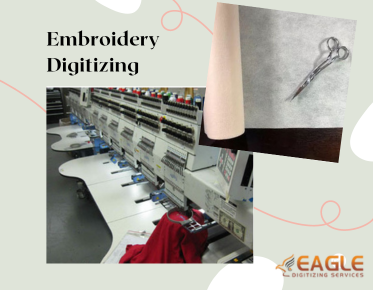Screen Printing Steps to Bring Your Designs to Life
Screen printing, a timeless technique that transforms blank canvases into vibrant masterpieces, has captured the hearts of creatives for decades. This art form is both versatile and rewarding, making it an exciting endeavor for anyone with a passion for design. Whether you're a seasoned artist or just dipping your toes into the world of printmaking, understanding the process can unlock endless possibilities for personal expression or business ventures. It’s more than just transferring ink; it’s about crafting stories and connecting with others through your creations. Let’s dive into the step-by-step journey of screen printing and uncover the secrets behind this popular craft.
What
Makes Screen Printing So Popular
Why
Screen Printing Stands Out in the Design World
Screen printing isn't just a method—it’s an art form that merges
creativity with precision. Its ability to produce bold, vibrant designs with
precise details makes it a favorite among artists and businesses alike. Unlike digital printing, it offers unique texture and depth,
adding a tactile element to your work. Screen printing thrives on consistency,
delivering professional-grade results time after time. It’s this reliability,
paired with its artistic potential, that solidifies its reputation as a top
choice for creators everywhere.
The
Versatility of Screen Printing for Creative Projects
From apparel and posters to ceramics and wood, screen printing can be
adapted for countless mediums. This flexibility allows artists to experiment,
pushing the boundaries of their creativity. It’s not just for large-scale
productions—small runs and custom designs shine with this technique. Whether
you’re designing a unique gift or launching a product line, screen printing
ensures your projects stand out in a crowded market. Its adaptability and
versatility make it an indispensable tool in any creator's arsenal.
Understanding
the Basics of Screen Printing
How
Does Screen Printing Operate and What Is It?
At its core, screen printing involves pressing ink through a mesh
screen onto a surface, with a stencil guiding the ink's placement. This simple
yet effective process produces vivid and long-lasting prints that withstand
wear and tear. The technique’s magic lies in its ability to create vibrant
colors and sharp lines, even on textured materials. By layering different inks,
artists can craft intricate, multi-colored designs. with precision. Its
straightforward principles make it accessible, while its potential for
complexity keeps advanced practitioners hooked.
Key
Tools and Materials Needed for Screen Printing
Success begins with the right tools: a sturdy screen, emulsion, ink, squeegees, and a reliable light source for exposure. Each component plays a vital role in ensuring your final product looks polished and professional. Beyond the basics, additional accessories like drying racks and mixing containers can streamline your workflow. Investing in quality materials not only enhances your results but also ensures durability and ease of use. Having a well-stocked toolkit is the first step to unlocking your screen printing potential.
Preparing Your Design for Screen Printing
Choosing
the Right Design for Your Project
Not all designs are created equal when it comes to screen printing.
Bold, high-contrast artwork translates best, creating clean and impactful
visuals on your chosen medium. Simplicity often works wonders, as intricate
details can become lost in the printing process. Consider how your design
interacts with negative space to enhance its overall appeal. Tailoring your
design to the strengths of screen printing ensures that your final product
resonates with clarity and vibrancy.
How toCreate a Print-Ready Digital File
Using graphic design software, convert your artwork into a high-resolution digital file for optimal results.
Ensure that your design is scaled appropriately and adjusted for the intended
print size. Save it in a compatible format, such as PNG or TIFF, to maintain
clarity and detail during the printing process. Vector-based files are
especially useful for resizing without losing quality. Preparing a precise
digital file is key to achieving a sharp, professional look in your prints.
The
Importance of Separating Colors in Your Design
Multicolor designs require separating each hue into individual layers,
a process known as color separation. This ensures that each ink is applied
precisely where it’s needed, preventing color overlap or smudging. Use design
software to isolate colors and create separate stencils for each layer. Proper
preparation and alignment of these layers are crucial for achieving vibrant,
crisp, multicolored prints. Mastering this step can elevate your designs from
simple to sophisticated.
Setting Up Your Workspace
Crafting
the Ideal Space for Screen Printing
A clean, well-lit, and ventilated area is crucial for efficient screen
printing. Clear your workspace of dust and debris to prevent imperfections in
your prints. Ensure you have ample room for tools, drying racks, and equipment
to maintain a seamless workflow. Organization is key—having everything within
reach reduces stress and keeps the creative process enjoyable. A thoughtfully
arranged workspace enhances productivity and inspires creativity.
Essential
Safety Tips for a Hassle-Free Printing Experience
Handle chemicals like emulsion and ink with care to ensure your
safety. Always wear gloves and masks when working with potentially harmful
substances, and keep your workspace ventilated to minimize exposure to fumes.
Store cleaning supplies and first-aid essentials within easy reach to quickly
address spills or accidents. Prioritizing safety not only protects you but also
makes the printing process more enjoyable and stress-free.
Choosing the Right Screen and Frame
Understanding
Screen Mesh Count and Why It Matters
The mesh count of your screen determines the level of detail you can
achieve in your designs. Higher mesh counts are ideal for intricate artwork and
fine lines, while lower counts are better suited for bold, simple designs.
Choosing the right mesh ensures that your ink flows correctly and that your
prints are clear and consistent. Experimenting with different counts can help
you discover the perfect balance for your specific project needs.
Picking
the Perfect Frame for Your Design
Frames should be sturdy and appropriately sized for your design to
prevent warping or movement during printing. Wooden frames are cost-effective
and suitable for small projects, while aluminum frames offer superior
durability for repeated use. Consider the size of your design and the material
you’re printing on when selecting a frame. Investing in a quality frame ensures
longevity and reliability, making your screen printing setup more efficient.
Coating the Screen with Emulsion
What
is Emulsion and How Does It Work
An emulsion is a light-sensitive liquid that plays a critical role in
the screen printing process. When exposed to UV light, it hardens to create a
stencil on your screen, blocking ink from passing through unwanted areas. This
precise control allows for crisp, clean designs that stand out. Choosing the
right type of emulsion, whether water- or solvent-based, is essential to match
your project’s requirements.
Step-by-Step
Guide to Applying Emulsion Evenly
Apply emulsion in a thin, even layer using a scoop coater, ensuring
both sides of the screen are coated. Tilt the screen at an angle and work in
smooth, consistent strokes to avoid streaks or bubbles. Once coated, allow the
screen to dry in a dark, dust-free space to prevent premature exposure. Properly
applied emulsion creates a flawless stencil, setting the stage for a perfect
print.
Exposing
the Screen to Create Your Stencil
How
to Use a Light Source to Burn Your Design
To transfer your design onto the emulsion-coated screen, place your printed artwork (usually on transparent
film) directly on the screen. Secure it in place to avoid shifting, then expose
it to UV light. The light hardens the emulsion everywhere except where your
design blocks it, leaving the stencil intact. Experiment with exposure setups,
such as exposure units or DIY solutions, to find what works best for your
needs. This step bridges your digital design with the tangible print process.
Tips
for Perfect Exposure Times
Timing is everything when it comes to exposure. Too little time leaves
parts of the stencil incomplete, while too much time hardens areas meant to
remain open. Conduct test runs with small designs and note the results to find
the ideal exposure time for your setup. Variables like emulsion thickness,
light intensity, and design detail all play a role. Mastering exposure ensures
that your prints will consistently reflect your artistic vision.
Washing
Out the Stencil
Rinsing
Your Screen for Clean, Sharp Lines
After exposing the screen, rinse it gently with water to wash away the
unexposed emulsion. Focus on the design areas to reveal your stencil while
avoiding unnecessary pressure that might damage the surrounding emulsion. Use a
spray nozzle or sponge for even cleaning and inspect the stencil for any
residual emulsion. A well-rinsed screen produces clean, precise lines that are
crucial for professional-looking prints.
Troubleshooting
Common Stencil Issues
If you notice blurry edges, incomplete designs, or emulsion that won’t
wash out, re-evaluate your exposure time or the evenness of your emulsion
coating. Overexposed screens may require a longer rinse, while underexposed
ones might not develop properly. Keep detailed notes of your process to
identify patterns and make adjustments. With practice, you’ll minimize errors
and perfect your stencils.
Screen printing is more than just a technique—it’s a gateway to endless creative potential. With the right tools, knowledge, and a little patience, you can transform your designs into high-quality, vibrant prints that showcase your unique vision. Whether you're a hobbyist looking to explore new art forms or a business owner aiming to produce professional-grade prints, screen printing opens up a world of possibilities. By following the steps outlined in this guide, you'll be well on your way to mastering this versatile craft and bringing your designs to life in ways you never imagined. Happy printing!



